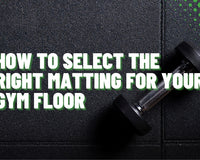Under desk treadmills are far safer than regular treadmills, which result in 24,000 serious injuries annually. You don’t need to concern yourself with the risk of shin splints or stress fractures with an under desk model.
If you’re not running on the treadmill, you can negate most of the injuries that lead to ER visits. Taking it slow and steady is key to remaining injury-free and getting in a good exercise session.
However, we do have a few safety tips that will help you get moving and reduce your risk of discomfort or injuries.
Related: Top 6 Under Desk Treadmills
5 Safety Tips
1. Route all Cables and Cords Away from the Treadmill
Trips and falls are major safety concerns when you step foot on your treadmill. Even if you’re conscious about the cord, one misstep can lead to falling and injury. Instead, spend the time to carefully:
- Route all of your cables and cords
- Create a dedicated space for your treadmill
Cable management is fast and easy, and you’ll appreciate the tidiness of the space. Coaxial cable staples will attach to walls or the interior of the desk to route cables through.
If you don’t want to use staples, there are similar items with adhesive tape that will work well.
If you have any cables or cords on the floor, place a cord cover over them.
Finally, use zip-tie cables so that they’re not in your way. A few minutes of cable and cord management will allow you to stay as safe as possible when using your treadmill. Still, you do have a few more things to consider, such as your footwear.
2. Wear the Right Footwear
Every step that you take on the treadmill will put weight on your foot. Improper weight distribution can cause you to get aches and pains in your foot and develop calluses, too. It's worth bringing an extra pair of shoes to the office if your normal footwear, such as dress shoes, lacks proper gripping power.
Your shoes need to have:
- Arch support
- Proper toe box width
- Adequate cushioning on the ball and heel of the foot
Trainers are worth the investment because they’ll keep your feet pain-free when walking or running on the treadmill.
3. Stay Hydrated
Hydration is crucial when performing any type of cardiovascular activity. When your heart is beating and you’re sweating, you’ll lose enough water to cause dehydration. Dehydration will impact your performance, causing you to burn fewer calories and walk/run slower than normal.
Runners recommend:
- Drinking two cups of water before you step on the treadmill
- Drink an additional glass of water for every 15 minutes on the treadmill
Be sure to have a water bottle within reach so that you can sip on your water throughout your session. If you’re on the treadmill for longer than 15 minutes, be sure to drink an additional two glasses of water when you’re done to replenish the water lost.
4. Take Breaks
Staying active is important, but it’s also important not to overdo it. Balance is key. Make sure that you’re taking regular breaks to give your body a rest, rehydrate and stretch.
It’s perfectly acceptable to switch between periods of walking and sitting throughout the day. Otherwise, you may find yourself running out of steam in the afternoon.
5. Stretch Before and After Walking Sessions
Stretching before and after your walking sessions is a great way to prevent muscle strains and stiffness. Here are some stretches to try:
- Forward bends or standing hamstring stretch. Tight and stiff hamstrings can lead to lower back pain. The lower back tends to take on a lot of stress and pressure when you walk, so keeping them loose and flexible can help prevent discomfort. If you have the flexibility, you can bend forward to touch your toes. Otherwise, you can place your hands against a wall at hip height to give your hamstrings a good stretch.
- Bent-over calf stretch. Your calves get a lot of use when walking on your treadmill, so stretch them out before and after your session. Stand with your left foot in front of your right foot. Keep your left leg straight and bend your right knee as you hinge at your hips to grab your right foot. Hold for three to five breaths and repeat on the other side.
- Quad stretch. Tight and stiff quads can make walking more difficult, so stretch them before and after your session. While standing with your legs hip-width apart, bend one leg back and reach back with the opposite arm to grab your ankle. Hold this stretch for 3-5 breaths.
Taking the time to perform even two simple stretches before and after your session will help prevent discomfort and stiffness.
Final Thoughts
An under desk treadmill can help you stay active while working, but it’s important to put safety first. Follow the tips above to make the most of your walks and stay productive.
Related Posts:





